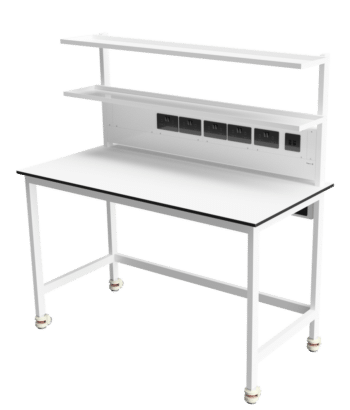Despite the UK ranking as the 11th least corrupt country in the world, corruption in the construction industry is more frequent than you might expect. And it’s an issue that can end up costing construction businesses in a big way, whether it’s financial losses in the millions or having to deal with the aftermath of reputational damage.
As a result, having procedures in place that can prevent and identify less-than-sound practices at any point in the procurement process is absolutely vital. Here, we’ll take a look at what procurement fraud is in more detail, the types of procurement fraud you should watch out for, and how you can prevent fraudulent activities from threatening your business.
What is procurement fraud?
According to the UK National Fraud Authority, procurement fraud is “a deliberate deception intended to influence any stage of the procure-to-pay lifecycle in order to make a financial gain or cause a loss”. In other words, it’s any fraud that relates to a company purchasing goods, services, or commissioning construction projects from third parties.
Procurement fraud can be carried out by external contractors or sub-contractors or staff within the organisation, and can result in serious financial losses, reputational damage, and public health and safety risks as a result of inadequately followed procedures.

Types of procurement fraud
Generally, the most common types of procurement fraud to watch out for include the following:
Bid rigging
Bid rigging involves bidders agreeing to collude throughout the procurement process as a way to eliminate competition.
Look out for bids where competitors withdraw higher bids, strangely high bids from competitors who only have one low bid, or instances with only one competitor in a bid.
Split purchases
This occurs when an individual splits a single large purchase into multiple smaller purchases to make sure they fall below both bidding and upper-level approval thresholds.
Purchase orders with the same vendor, material or creator that occur within a certain number of days from each other can be a tell-tale sign of this, so be on the watch for it if you have your suspicions.
Phantom vendors
The act of creating dummy companies in order to submit a variety of bids on a single contract. Such non-existent vendors give the appearance of feverish competition when really, these fake companies are actually bidding amongst themselves.
Be mindful of transactions for vendors with similar-sounding names, vendors and/or employees with matching addresses, as well as invoices that are just below the threshold for additional approval.

False claims
When a contractor submits an invoice, but the goods or services are never provided. Red flags to look out for here include: duplicate purchase orders with the same vendor, same materials, same services or identical quantities with a specific time frame that also feature the same monetary value.
Bid rotation schemes
This approach involves competitors submitting token bids that are too high to be accepted. As such, they’re not intended to ensure acceptance from the buyer. Instead, they’re used to create the impression of genuine bidding.
Analysing contract awards over time to see if contractors are awarded equal amounts tends to reveal whether bid rotating is taking place.
How to prevent and manage the risks of procurement fraud
As a business, you can reduce the risks of procurement fraud by carrying out the following:
Use your culture to set the right tone
You can do a lot to prevent fraud within your business through its culture. If bribes are left to run rampant, for instance, then you’re sure to feel the regulatory pinch sooner or later. Make your stance on fraud clear and be sure to communicate this to your employees and business partners.

Creating a code of conduct and ethics policy that are easy to follow and always to hand ensures everyone remains on board. State what you deem as fraudulent or unethical behaviour within them, along with the disciplinary action others can expect should they be in breach.
Segregate duties
If your business does most of its data input manually, then fraudulent behaviour still has the potential to be rife. Minimising the amount of control that individuals have over business processes is a case of segregating certain duties.
This ensures that no single person has the power to oversee entire transactions. Be sure to hire people you trust and provide them with the right training so that processes can work as you intend them.
Assess and monitor controls
Following on from the above, all existing controls should be regularly assessed. Ask yourself whether you need certain ones, along with whether necessary controls are effective enough to do an adequate job.
When you can identify risks within a control system, you can then work to improve the areas that can be taken advantage of in terms of fraud – even the most carefully controlled system can be bypassed.

Once you’ve improved your systems, you should be proactive in monitoring them. Creating a control review procedure that tests accuracy and functionality is key here, ensuring that the systems controlling your processes are properly developed and maintained.
Get to know your supplier
Of course, working with suppliers you trust is imperative too. You should always carry out background checks with those you’re working with. Not only does this help with understanding their reputation, but by being thorough enough, you can get more of a sense of their interests, associations, and potential conflicts of interest too.
As a business, association with shoddy sub-contract work and poor-quality materials in the production process is something they can ill-afford. So, it’s important to make sure your sub-contractors and their work are managed and monitored properly; your reputation could hang in the balance otherwise.
Keep an eye on the procurement process
If you’re dealing with suppliers based in other countries, then staying in the loop with their own practices is easier said than done. On the other side of the globe, far-flung suppliers may fall into some pretty duplicitous habits, whether it’s producing counterfeit goods, offering bribes, creating fraudulent financial statements or any number of dicey tactics.

Wherever your suppliers are based, be sure to carry out regular quality checks. Get in the habit of checking for non-deliveries, repeat deliveries for the same order and any discrepancies between purchase orders. Otherwise, you could leave yourself open to more instances of fraud than you were expecting.
Create a fraud response plan
Should the worst come to worst, you need to know what to do. As unexpected and inconvenient as it can be, businesses must be equipped with processes, procedures and methods to help mitigate fraud as much as possible. Draw up a detailed fraud response plan and make sure it’s distributed throughout the company.
InterFocus can help you create an environment that’s the right fit for you and your team. For more information about our bespoke fitted labs, visit our homepage or call our team on 01223 894 833.




